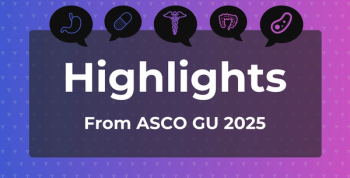
Oral GC Dose Tapering for MG Linked to Efgartigimod Initiation
Key Takeaways
- Efgartigimod treatment in gMG patients led to reduced glucocorticoid use, with 26% ceasing use and 66% reducing dosage by at least 1 mg/day after one year.
- The study observed a decrease in reliance on other immunosuppressive therapies, including acetylcholinesterase inhibitors and intravenous immunoglobulin, post-efgartigimod initiation.
Using US claims data, the authors evaluated oral glucocorticoid (GC) use at 5 time points during their retrospective analysis: 3 months before starting efgartigimod and 3, 6, 9, and 12 months after starting efgartigimod.
Reducing or eliminating oral glucocorticoids in individuals being treated for generalized
Although glucocorticoids are a known standard-of-care treatment for gMG, their use carries with it both benefits—anti-inflammatory, anti-proliferative, and immunosuppressive—and adverse effects that research shows increase at higher doses, including health care resource use and mortality rate.2,3 A neonatal Fc receptor blocker administered via injection, efgartigimod was first approved by the FDA in 2021 for antiacetylcholine receptor antibody–positive gMG and now also has an indication for chronic inflammatory demyelinating polyneuropathy.4,5
The present study authors add that although previous research has also produced promising data on shifting away from immunosuppression as a form of gMG treatment, additional evidence is needed to better inform clinical decision-making and treatment targeting in this regard. Using IQVIA medical and pharmacy claims data for April 2016 through June 2024 and Myasthenia Gravis Activities of Daily Living (MG-ADL) scores, they wanted to better define the impact of efgartigimod on glucocorticoid use. To be included, patients (N = 166) had to have initiated efgartigimod between January 1, 2022, and June 30, 2023, and have continuous use for at least 1 year with no claim lags of more than 120 days. The mean (SD) patient age was 59.8 years (58.0-61.7); 45.1% were female; 57.1% had commercial insurance vs 39.5% who had Medicare coverage; hypertension (47%) was the most common comorbidity; and 59.8% of patients were on either nonsteroidal immunosuppressive treatment (NSIST) and an advanced therapy (30.5%) or just NSIST (29.3%). Overall, 77% of patients had exposure to NSIST.
After initiating efgartigimod, patients reporting use of acetylcholinesterase inhibitors, NSIST, intravenous or subcutaneous immunoglobulin, and plasma exchange fell from 85% to 80%, 60% to 55%, 35% to 5%, and 9% to 3%, respectively. In addition, there were promising results in total drug classes prescribed to patients when comparing the 3 months before starting efgartigimod with measures taken at 3, 6, 9, and 12 months after starting efgartigimod:
- 3 months before: 4 or more drug classes, 16%; 3 drug classes, 39%; 2 drug classes, 32%; 1 drug class, 13%; no treatment, 0%
- 0 to 3 months after: 1%, 30%, 39%, 25%, and 5%, respectively
- 3 to 6 months after: 1%, 27%, 46%, 215, and 6%
- 6 to 9 months after: 2%, 24%, 46%, 21%, and 8%
- 9 to 12 months after: 1%, 20%, 46%, 25%, and 8%
Glucocorticoid average daily dose also trended downward: from a median (IQR) 17.9 mg/day (15.7-20.1) at baseline to 14.3 (12.6-16.0), 13.4 (11.5-15.4), 11.6 (10.0-13.3), and 10.2 (8.8-11.6) mg/day at 3, 6, 9, and 12 months post efgartigimod start. By the 1-year mark, 26% of patients were reporting no glucocorticoid use, 51% were able to reduce their daily use of glucocorticoids by at least 75%, and 66% were able to reduce their dose by at least 1 mg/day.
Among the 13% of patients who started at baseline with a glucocorticoid average daily dose above 30 mg/day, 83% were able to taper that dose over the course of the study. Female patients were 82% more likely to accomplish this end point (OR, 1.82; 95% CI, 1.01-3.32; P = .047), and patients who had a baseline dose higher than 10 mg/day were significantly more likely to bring down their glucocorticoid average daily dose vs a baseline dose below 10 mg/day.
Forty-seven percent of the total patient population had MG-ADL before/after scores, and the authors’ findings show these mean scores fell from 7.9 (95% CI, 7.2-8.5) to 4.3 (95% CI, 3.8-4.9; P < .05).
“While observational designs inherently lack the controlled framework of clinical trials, this study leverages prescription data from clinical practice to reveal meaningful trends,” the study authors wrote, adding, “These findings align with emerging clinical practice reports documenting similar reductions in [glucocorticoid] reliance and underscore the potential of efgartigimod to alleviate long-term [glucocorticoid] burden.”
Their findings are also strong because they show reducing glucocorticoid dosing is a sustainable goal, and the MG-ADL results reflect positive outcomes seen in the phase 3 ADAPT trial (
Still, there are also limitations on these results, and they include potential over- and underestimation of total dosing, lack of complete information on reasons behind glucocorticoid dose tapering, and limited longer-term follow-up.
References
- Goyal, Qi C, Stone J, et al. Reduction in oral glucocorticoid use after efgartigimod initiation in clinical practice among patients with generalized myasthenia gravis. J Neurol Sci. 2025:477:123652. doi:10.1016/j.jns.2025.123652
- Rice JB, White AG, Scarpati LM, Wan G, Nelson WW. Long-term systemic corticosteroid exposure: a systematic literature review. Clin Ther. 2017;39(11):2216-2229. doi:10.1016/j.clinthera.2017.09.011
- Rice JB, White AG, M. Johnson, et al. Healthcare resource use and cost associated with varying dosages of extended corticosteroid exposure in a US population. J Med Econ. 2018;21(9):846-852. doi:10.1080/13696998.2018.1474750
- Vyvgart. Prescribing information. Argenx BV; 2021. Accessed August 25, 2025.
https://www.accessdata.fda.gov/drugsatfda_docs/label/2021/761195s000lbl.pdf - McNulty R. FDA approves efgartigimod alfa and hyaluronidase for CIDP. AJMC®.June 21, 2024. Accessed August 25, 2025.
https://www.ajmc.com/view/fda-approves-efgartigimod-alfa-and-hyaluronidase-for-cidp
Newsletter
Stay ahead of policy, cost, and value—subscribe to AJMC for expert insights at the intersection of clinical care and health economics.







































